The unknown village of Madrid: Quijorna.
A village far, far away.
While living in Madrid, I often visited my best friend and her family who live in a far away, unknown village in the district of Madrid. This little town is called Quijorna, although we always joke that it's really called Narnia or Mordor. Nobody knows where it is or has even heard of it. The dialogue usually goes like this:
People: "Hey, what are you doing on Saturday? "
Me: "I'm going to spend the weekend at my friend's house in a village far far away. "
People: "Oh really? What's it called? "
Me: "Quijorna. "
People: "Kee what? "
Me: "Do you know Villanueva de la Cañada? "
People: "Bah I heard of it, it's a village so far away! "
Me: "Yeah, Quijorna is even further than that. "
People: "Woaahhh you're crazy! "
Why go there?
Now you may ask me, what is there to do in Quijorna, and why would you go all the way there if it is so far? To be completely honest, there is not much to do there. But that's what I like most about this village. After being the entire week in the center of Madrid, among the hustle and bustle of people, the loud noise of cars and traffic, and seeing buildings and infrastructure everywhere, I love to finally get away from all that and find peace and serenity in the country side.
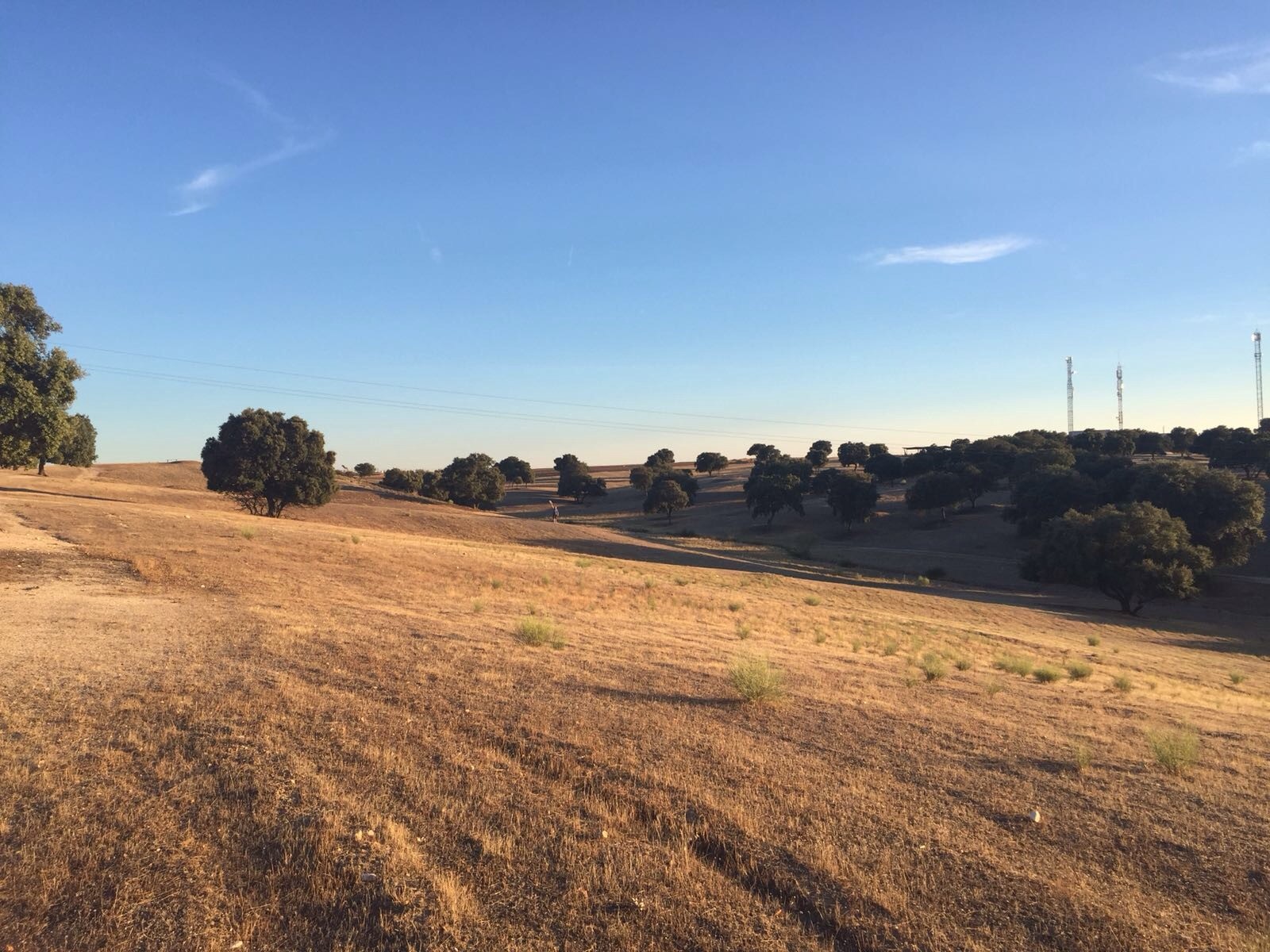
Nature
Quijorna is a little village nestled among fields and hills and surrounded by mountains. I love to walk in the fields around the outskirts of the village, following the trail of the natural golf course. This means that all the hills on the course are not man-made like in other courses. Of course, if you want to play golf, you're welcome to do so but don't expect a perfectly groomed course. As I mentioned, it's a natural golf course, so it is not well kept like those in private clubs, but it's do-able to play in.
On my walks, I usually start by the trail that is by the first bus stop in Quijorna (if you are facing the Avenida de Dehesa, go to the left), I walk all around and I finish the walk by the polideportivo.

If I go in the evening (which I usually do), I love to see the sunset from the fields as the sun tucks itself behind the mountains and makes beautiful colors in the sky and on the fields.
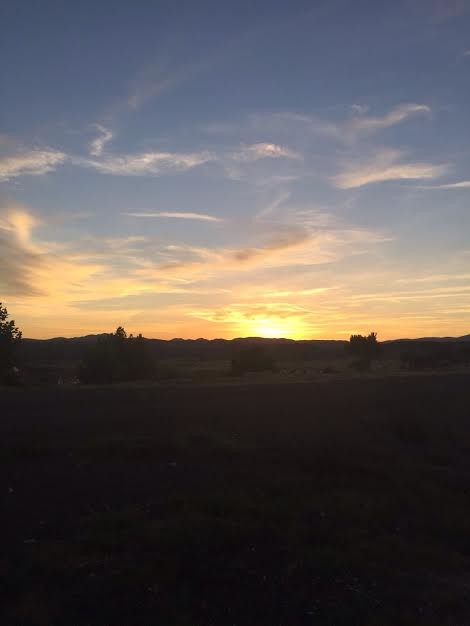
The clouds look like they are painted with long strokes in the sky.
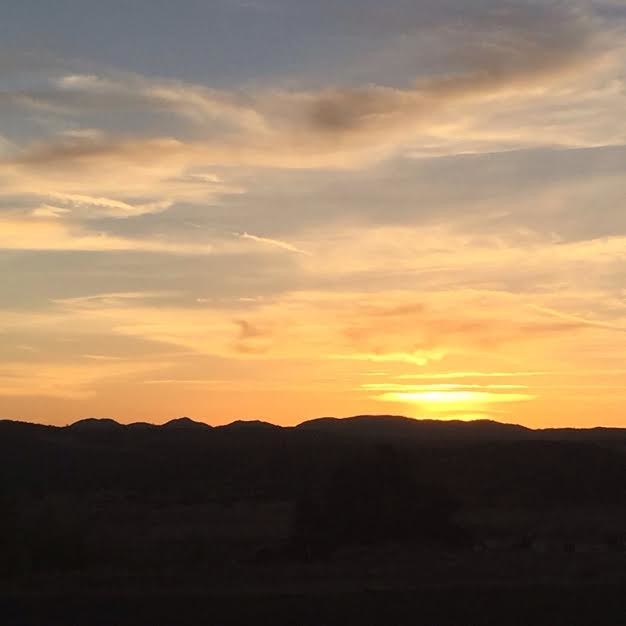
You don't see these kinds of obstruction-free sunsets in the center of the city!
If you decide to wander off the trails like I do, I recommend wearing tall socks because sometimes the tall grasses can sometimes feel scratchy and uncomfortable. The socks would also protect your ankles from any unwanted bugs and things that might want to stick to your skin or bite you. Although the fields here are dry and brown/yellow looking during the hottest times of the summer (June-August), the trees are always green and there is much wildlife to observe.
There are many hundreds (and possibly thousands) of rabbits living throughout the area, and every time I take my walk, I see ten or twenty of them scurrying up the hills with their pompom tails bouncing, going into their homes to hide. I think you are technically allowed to hunt them, but only in certain areas and I don't know the laws about that.
A few times in the early afternoons I would see shepherds taking their flocks of sheep for walks through the fields. For some reason I find that observing the sheep is very relaxing to me. I especially love and am very fascinated by seeing this because it is something that I am not used to; as have never seen flocks of sheep out in the fields in person (when I am not in a car).
From the road going to Quijorna, if you look to the left you may see a tall narrow stone building. Seeing it many times from the distance, I had always wondered what it was. I thought it was some sort of monastery or an abandoned church. One day I decided to walk all the way there to explore it. It took me about thirty minutes to walk there from the outer edge of town, nearby from where the first bus stop is.
On the way to the mysterious building, I saw rabbits and sheep; the flowers in the fields were blooming because it was early springtime and the sun was shining. I often stopped to talk a good look around me and observe my surroundings before I continued walking. When I arrived to the structure, I found out that it was actually a bird sanctuary. I don't remember for what kind of bird it was built for, but at least I had solved the mystery!
Along the walking route that I usually take, there is a horse farm where I've stopped many times to pet the horses.
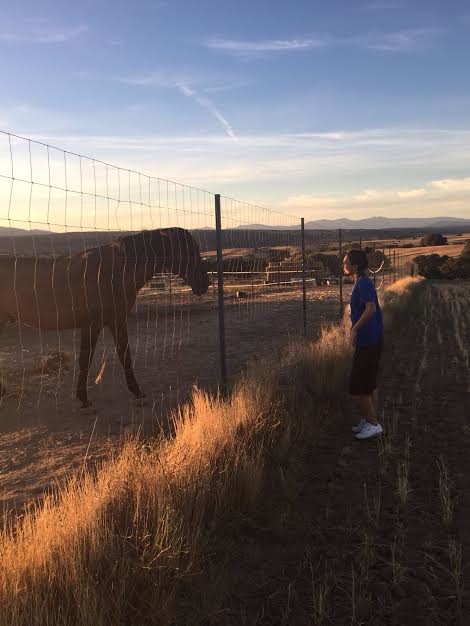
The horse and I had an intense eye contact and intimate moment amongst the changing colors of the sunset.
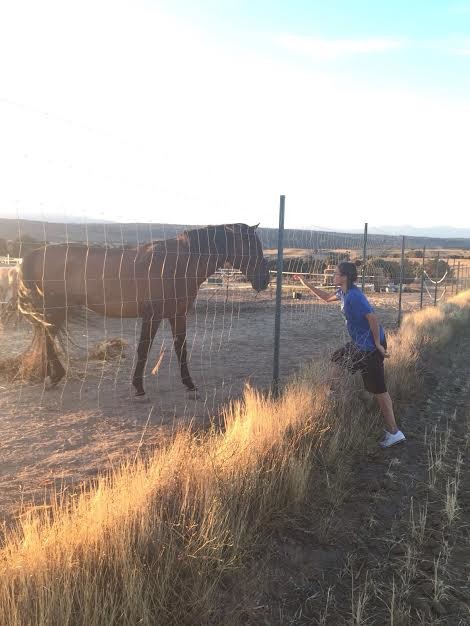
The horse came to me and let me pet him.
I really love horses, and just seeing them makes me feel so calm and happy. I asked a man there if it was possible to ride these horses or take lessons, but he said that they are still too young to ride, however, they could possibly be ready next year.
On the other hand, there's another nearby horse farm where you can take lessons and ride horses. You do need a car to get there because it requires you to leave the Quijorna area by driving back the long route towards Villanueva de la Cañada. If you want to take a bicycle instead of a car, you may spend a bit of time getting there so it's up to you.
As much as I love spending time out in the fields of Quijorna, the village center definitely has its charm as well, which I will be discussing in more detail later.
Like all town centers, Quijorna has the basic necessities for its citizens: a town hall, a church, a local grocery store, bars and restaurants (not many), and a sports center. I like basic living, so while others may see life and enjoyment here as being limited, I see it as living satisfied with the bare necessities. And don't forget, the people who live here have the villages next door close at hand for the chance that they want to buy a larger selection of items or participate in more activities, etc.
El Polideportivo (the sports center)
In the village there is a sports center where you can play tennis, paddle ball, soccer (football) and basketball. To use the facilities, I believe you have to pay a fee, however, many times I have gone there with my friend and we used the tennis courts to play badminton or to ride our skateboards (not sure if that is allowed... ). We used the basketball courts a few times as well. Usually the courts are the busiest in the evenings after people come home from work and school, but the times I went were earlier in the day, and I was lucky to find them unoccupied. I have never played paddle ball or soccer at this facility, but they are obviously very popular sports for the people here.
Next to the tennis and basketball courts are the outdoor exercise structures which I've used many times after my walks. They're simple but they do the job and they're free. I think it's better than paying to join a gym, but maybe that's just me being cheap.
Nearby there is the public pool, which is open during the summer months from 12pm to 8pm, and it costs around 4€ to spend the whole day there. I really wanted to go here, but I ended up not having time. It's not a big deal anyway, it's a small pool but it's definitely refreshing on a hot summer day (and it gets really hot and dry in Madrid in the summer).
El Mirador
Next to the polideportivo and up the hill a bit more is the mirador, or the viewpoint of the village. It's basically a structure where you can see the whole village (you will see how small it is) from the top level. Since this structure has been recently renovated, there are now stairs to help you get up (before you had to jump or stand on someone and pull yourself up), and there are railings to prevent people from falling off.
This mirador is especially useful during the village's fiesta, or celebration, when there are fireworks and you will get the best view of them from here, but also many people come here every day to see the sunset. The structure is now painted a bright blue with some graffiti and I think it looks very nice and unique.
How to get to Quijorna
From Principe Pio, the bus 581 goes to Quijorna, going through Alcorcon, Villaviciosa de Odon, Brunete, and Villanueva de la Cañada. It takes a minimum of one hour to get to Quijorna, and if there is a lot of traffic and/or if the bus passes by the Universidad Alfonso X in La Cañada, then the bus ride would be 1 hour and 15 minutes. The bus ticket costs 4. 90€ one-way if you don't have the C2 zone transportation card (abono), but you can also discount the price if you have an A1 or B2 zone transportation card.
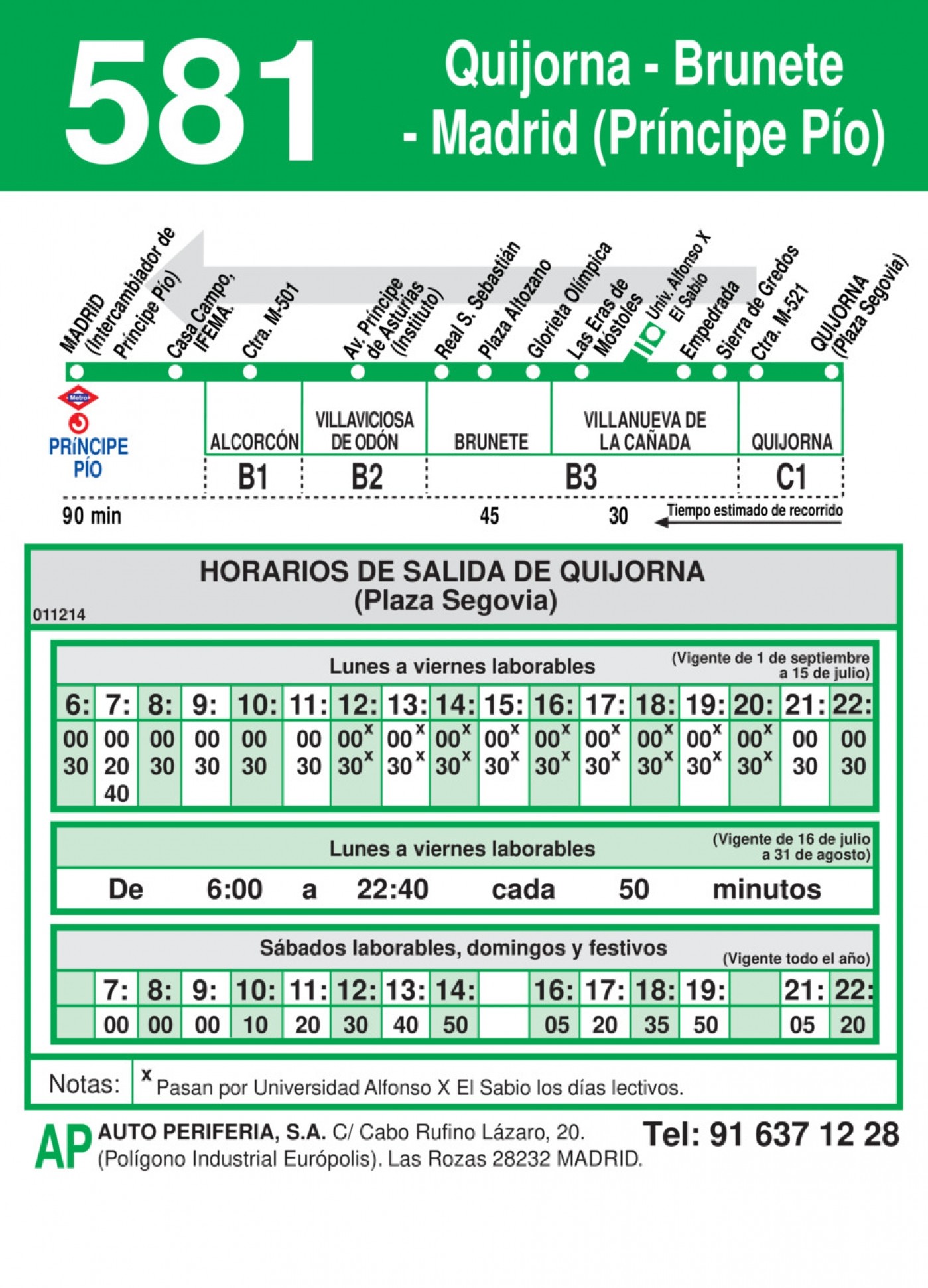
Basically from Principe Pio the bus to Quijorna leaves on the :15 and the :45, and from Quijorna to Madrid it leaves on the :00 and the :30. During school days, the bus passes by the Universidad X El Sabio between 12:00pm and 8:30pm, which means that the bus ride will be 15 minutes longer than usual.
It is important to pay attention to when the summer schedule starts. From the 16th of July to the 31st of August, the bus frequency (which is already limited) is reduced to every 50 minutes instead of every 30 minutes.
Photo gallery
Content available in other languages
Want to have your own Erasmus blog?
If you are experiencing living abroad, you're an avid traveller or want to promote the city where you live... create your own blog and share your adventures!
I want to create my Erasmus blog! →






















Comments (0 comments)